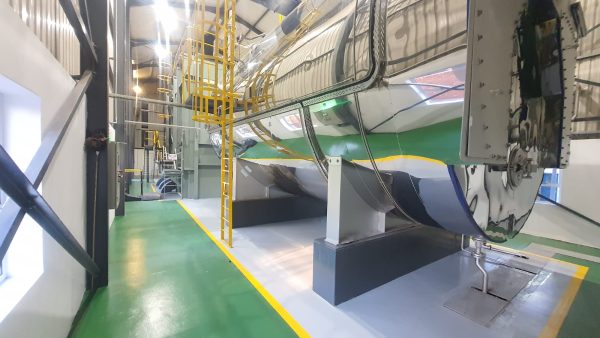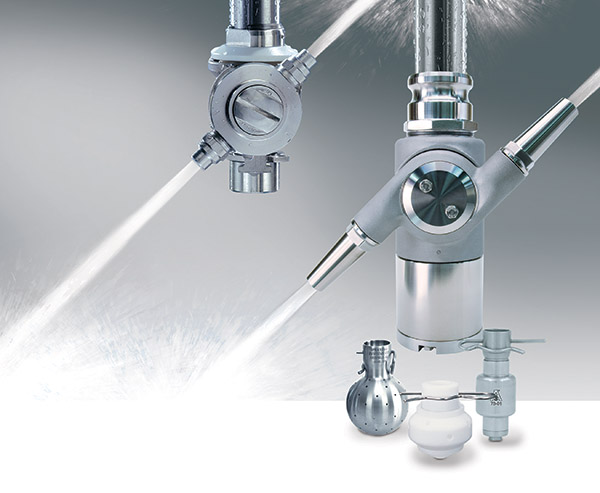FOOD and beverage companies are under increasing pressure from both holding companies and retailers to embrace sustainability whilst still containing food prices, according to Dennis Williams, commercial director of Associated Energy Services (AES), a leading operations and maintenance service provider to the steam and boiler sector.
Through partnering with food and beverage companies for over 25 years, AES has come to fully understand this two-fold challenge and delivered workable solutions.
Thermal energy
Williams explains that the food and beverage industry is not only one of the country’s largest users of thermal energy (which exceeds electricity requirements by two or three times), but also often needs bespoke solutions. He says: “Steam applications are vast – and can include everything from spray drying coffee creamers to heating raw materials ahead of processing beer. One manufacturer may use steam for cooking and canning vegetables. Another – such as the dairy industry – uses it for pasteurising.”
While electrical energy is dense and user-friendly, thermal energy has to be converted into a usable format on site and then needs to be reticulated throughout production facilities to multiple operational areas.
Williams says the sector’s key production-related performance issues include efficiency, quality and reliability. Because AES is responsible for the whole chain of control, the company needs an on-the-ground understanding of exactly how a particular plant and business operates. “We walk our clients through the reticulation process, do thermal imaging, discuss whether or not steam traps are functioning correctly and make recommendations about reticulation dead-ends. Strategic input includes conducting a high-level energy audit – which has high-level cost impacts,” he says.
Biomass and Biofuels
Williams acknowledges that many of the multinationals operating within the food and beverage sector have set stringent global carbon reduction targets. ”They assume it is as easy to decarbonise in South Africa as it is overseas – which is not the case – as we have a completely different and more constrained energy mix. Coal remains the lowest priced fuel available for companies fighting to reduce input costs.”
Just like premium brands in supermarkets, eco-friendly biomass or biofuels come with a higher price tag. The cost of timber residues and woodchips is also growing alongside demand. Biomass is bulky and transport is potentially expensive. In addition, boiler plants need to be upgraded or replaced to accommodate biofuel or biomass.
Williams explains that every user should aim to access gigajoules of energy using a consistent and repeatable fuel specification to maximise efficiency and achieve the lowest possible steam cost. “Every biomass type has different technical characteristics. However, in general, it has low energy and bulk density. Moisture content also impacts the realisable calorific value of the fuel. The particle size and processing required to match a suitable combustion system is a critical consideration.”
Serving up savings
However, just as smart shopping can deliver savings in supermarkets, strategic reconfiguration of steam generation facilities, changing fuel and ash handling systems and improving general plant reliability can positively impact bottom lines.
AES says it has some ‘stand-out’ success stories following clients converting to biofuels. These include:
An FMCG client applied biomass for over 10 years after sourcing a state-of-the-art biomass boiler from Belgium. “The unit provided about 6-8% efficiency benefit over lower-cost waste heat boiler solutions, but increased capital costs by 40%,” according to the company.
AES took over operations at a food manufacturer’s pilot facility, ultimately reducing the fuel consumption and carbon footprint by 21%. AES went on to operate a second – and larger site, delivering a 35% reduction in cost of fuel and carbon footprint.
A dairy client introduced a biomass boiler to offset its use of fuel oil. “They saw a substantial drop in their carbon footprint and will see significant ongoing benefits in reduced carbon tax liabilities,” Williams comments.
A food manufacturer chose a biomass hot-water solution to offset the carbon footprint of liquid fuels. “This plant has only been operational for 18 months and is tied to a still-to-be-completed production plant expansion. This client will reduce operating costs, while also ‘greening’ its overall energy mix,” he says.








